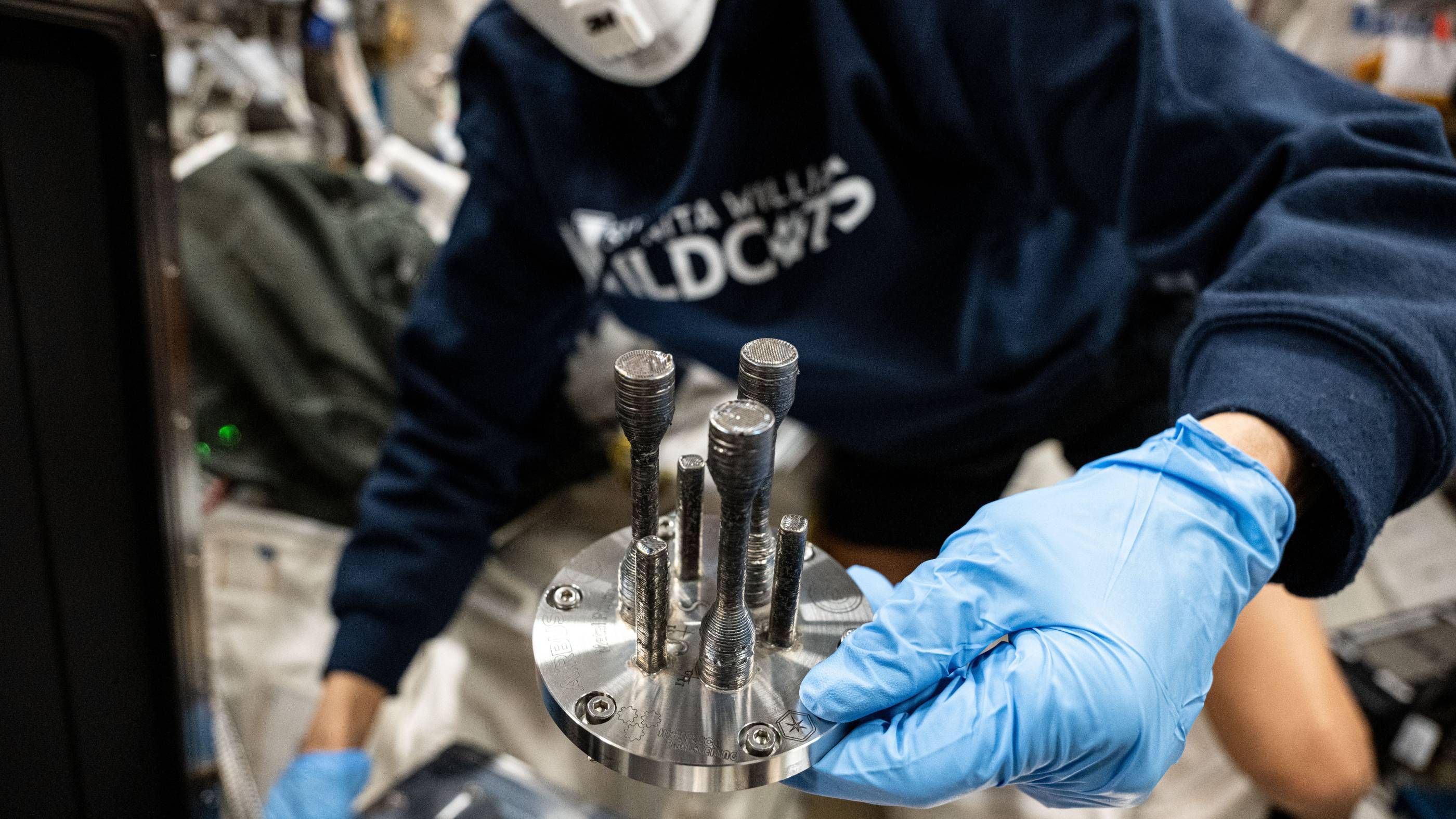Astronauts from the European Space Agency (ESA) have managed to 3D-print items out of metal for the first time, the agency recently announced. Until this breakthrough, orbital additive processes could only build stuff using plastic filament.
The ESA launched its Metal 3D Printer was delivered to the International Space Station (ISS) at the start of the year. It was built by Airbus and its partners in collaboration with Cranfield University, which was responsible for “designing the printer’s melting process and hardware, as well as its laser source, delivery optics, feedstock storage, and feeding system,” according to the press announcement.
The printer successfully finished constructing its first metallic object in August. The experiment will now generate three additional metal items, before all four are returned from orbit to undergo quality analysis at ESA research sites in France, Denmark, and the Netherlands.
“With the printing of the first metal 3D shape in space, ESA Exploration teams have achieved a significant milestone in establishing in-orbit manufacturing capabilities,” Daniel Neuenschwander, Director of Human and Robotic Exploration at ESA, said in a press statement. “This accomplishment, made possible by an international and multidisciplinary team, paves the way for long-distance and long-duration missions where creating spare parts, construction components, and tools on demand will be essential.”
While the Metal 3D Printer, which the ESA describes as a “technology demonstrator” is far from the only 3D printer deployed to orbit, it is the first to successfully construct a metal object in microgravity. This has huge implications for the future exploration of our solar system and beyond. The farther they travel from the Earth, the more self-reliant astronauts will need to be, due to the (literally) astronomical distances between themselves and potential resupply. Being able to generate critical components and tools on the fly — especially metallic components with their increased structural strength and durability compared to plastic alternatives — will prove critical to keeping tomorrow’s far-flung crews alive.
Source: ESA via Tom’s Hardware





